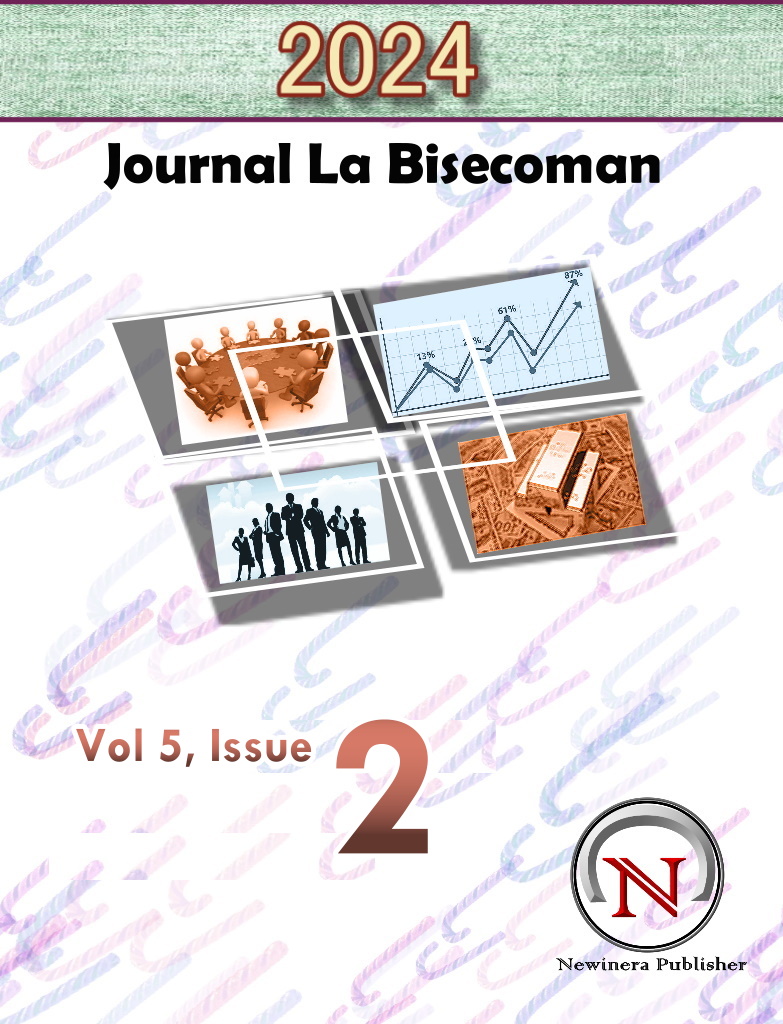Communication of News Contributor Organizations at Diskominfo Agencies of Nunukan Regency
Abstract
The Communication, Informatics, Statistics and Coding Office of Nunukan Regency has the task and function of serving information and disseminating development information in Nunukan Regency. As the leading sector disseminator of information, the Department of Communication and Information and Coding cooperates with all Regional Apparatus Organizations (OPD) as contributors to news and information. The information distribution channel is called SIMP4TIK. Of the 30 OPD contributors, only 14 contributors wrote on the SIMP4TIK news portal in quarters 1 and 2. Organizational communication plays an important role in the realization of organizational goals. This study aims to analyze how effective the communication of news contributor organizations in Nunukan Regency government agencies and what are the factors that influence it. The theory used is organizational communication theory. The research method used is descriptive qualitative with the object of research of the publication team consisting of team leaders, editors and OPD contributors in Nunukan Regency. The results of this research were obtained through interviews, observations, and literature studies. The results of the study found that organizational communication has not run optimally on news contributors in the Nunukan Regency Government. The triggering factors include OPD contributors having many tasks besides writing news. Another result, OPD contributors find it difficult to upload news due to lack of knowledge about technology and lack of interest in news authorship. On the editor's side, the lack of intensity of editorial meetings and communication between editors is a factor in the ineffectiveness of organizational communication.
References
Assenmacher, K., Glöckler, G., Holton, S., Trautmann, P., Ioannou, D., Mee, S., ... & Taylor, E. (2021). Clear, consistent and engaging: ECB monetary policy communication in a changing world.
Berger, C. R. (2020). Planning strategic interaction: Attaining goals through communicative action. Routledge.
Dijkzeul, D., & Funke, C. (2021). Mainstreaming Disability in Humanitarian Action: A Field Study from Cox’s Bazar, Bangladesh.
ER, M., & Nurmadewi, D. (2021). Analysis of business process management capability and information technology in small and medium enterprises in the garment industry (multiple case studies in East Java, Indonesia). The Electronic Journal of Information Systems in Developing Countries, 87(1), e12154. https://doi.org/10.1002/isd2.12154
Faustyna, F. (2023). Crisis Communications Related to Student Learning Implementation in Public Relations Marketing Event Course. International Journal Reglement & Society (IJRS), 4(2), 126-133. https://doi.org/10.55357/ijrs.v4i2.327
Meske, C., Kissmer, T., & Stieglitz, S. (2020). Bridging formal barriers in digital work environments–Investigating technology-enabled interactions across organizational hierarchies. Telematics and Informatics, 48, 101342. https://doi.org/10.1016/j.tele.2020.101342
Mizikaci, F. (2006). A systems approach to program evaluation model for quality in higher education. Quality Assurance in Education, 14(1), 37-53. https://doi.org/10.1108/09684880610643601
Mukhtar, M., Risnita, R., & Juniarni, C. (2020). Public Relation Management In Developing Organizational Behavior. International Journal of Educational Review, 2(1), 18-29. https://doi.org/10.33369/ijer.v2i1.10380
Sharma, N., & Singh, R. K. (2019). A unified model of organizational effectiveness. Journal of Organizational Effectiveness: People and Performance, 6(2), 114-128. https://doi.org/10.1108/JOEPP-10-2018-0084
Suriadi, S., Supriyatno, T., Mursidin, M., & Serli, S. (2022). Strengthening the character of Nationalism on the Island of Borneo. International Journal for Educational and Vocational Studies, 4(1), 70-80. https://doi.org/10.29103/ijevs.v4i2.7281
Talamali, M. S., Saha, A., Marshall, J. A., & Reina, A. (2021). When less is more: Robot swarms adapt better to changes with constrained communication. Science Robotics, 6(56), eabf1416. https://doi.org/10.1126/scirobotics.abf1416
Tariq, E., Alshurideh, M., Akour, I., & Al-Hawary, S. (2022). The effect of digital marketing capabilities on organizational ambidexterity of the information technology sector. International Journal of Data and Network Science, 6(2), 401-408. https://doi.org/10.5267/j.ijdns.2021.12.014
Copyright (c) 2024 Journal La Bisecoman

This work is licensed under a Creative Commons Attribution-ShareAlike 4.0 International License.









